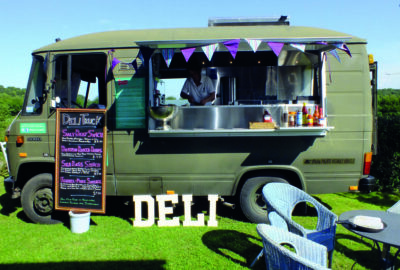With extensive experience in corporate advisory services and a decade of experience in professional services and investment banking, Craig Rachel, Director, AlixPartners has his finger on the pulse of market influences in hospitality. Having produced a number of sector publications, including the Growth Company Index and Market Growth Monitor, we asked him for some insights as we head into 2025.
How has the hospitality industry performed so far this year?
Our most recent report (produced in conjunction with CGA) shows the first overall increase in outlet numbers in two years, and the first time since COVID where both the managed and independent sectors are now growing. Overall, we’ve seen an easing of the significant pressures that have challenged the sector, which has paved the way for a more positive outlook and to enable businesses to open new units.
Have there been any outstanding market segments?
Its difficult to pinpoint specific segments, as there are winners and losers across the market as customers are increasingly discerning during periods when consumer spending is under pressure.
AlixPartners conducted some consumer research at the turn of the year which indicated that customers looking to manage their spending will increasingly trend towards quality operators rather than trading down, meaning those businesses in the ‘squeezed middle’ between a value proposition and quality are most likely to struggle.
We see food-led pubs as an area which has seen substantial growth in recent years, as a combination of a high quality offer (often with accommodation) as an alternative to chain restaurants plus broader trading windows have led to strong economic performance.
Is the sector out of the woods yet?
There are still structural challenges facing the sector that are being managed, in particular the impact of wage inflation, energy costs and at times uncertain consumer confidence. There is also uncertainty regarding any potential new government legislation that may be introduced.
Continued growth and operational excellence is critical, and the best operators have shown that it is possible to drive margin growth with strong service levels and a compelling proposition.
What contributed to the growth in themed bars?
Expansion in this segment has been driven through growth in competitive socializing venues. These businesses have been particularly popular as they drive both corporate and social spending and enable customers to mix with friends and colleagues who may not drink alcohol.
Competitive socializing venues are also popular with landlords as they drive footfall, and the higher margin operations are attractive to investors who have backed roll outs of these business.
Earlier this year, you reported a revival of M&A activity, what has driven it?
The year has seen a continuation of M&A activity across the broader sector, with deals a combination of the backing of smaller roll-outs and strategic acquisitions from trade investors looking to add additional brands or operating capabilities to their portfolios.
The return to margin expansion has been key, particularly as investors have to drive returns through profitable growth rather than financial engineering. This has meant that high growth businesses such as QSR, franchise and competitive socializing concepts have been in demand.
What is your trend/performance forecast for 2025?
We expect to see continued deal activity into 2025 as trade buyers increasingly look externally for growth opportunities, and as private equity buyers obtain greater comfort over the financing and consumer spending environment.
There are a number of high quality businesses that will be looking to seek external financing over the next 12-18 months, and we expect to see these come to market as we get more clarity over trading performance.
This continued momentum in deal activity could help bring further confidence to the investor community and will help drive further deal flow.



